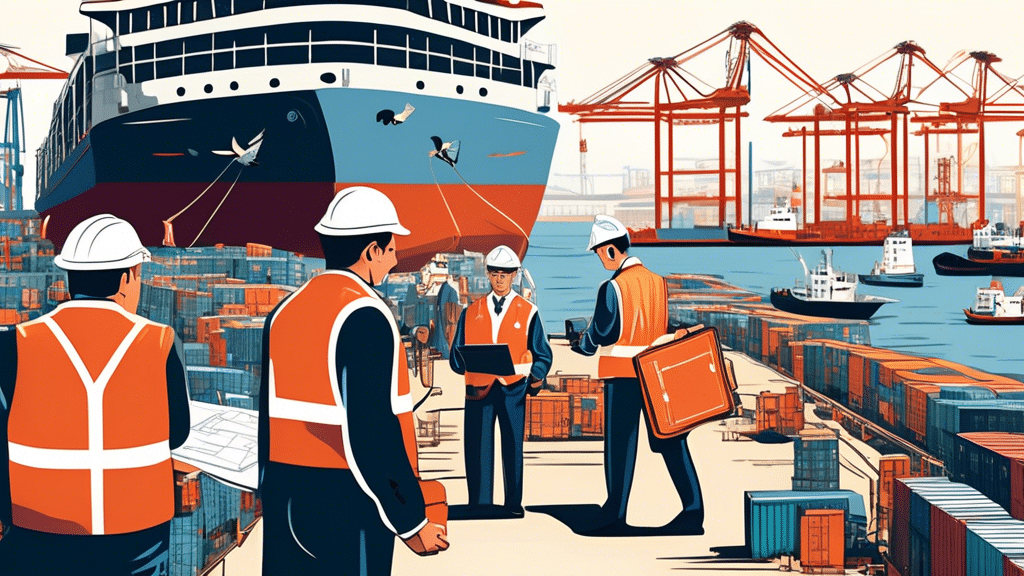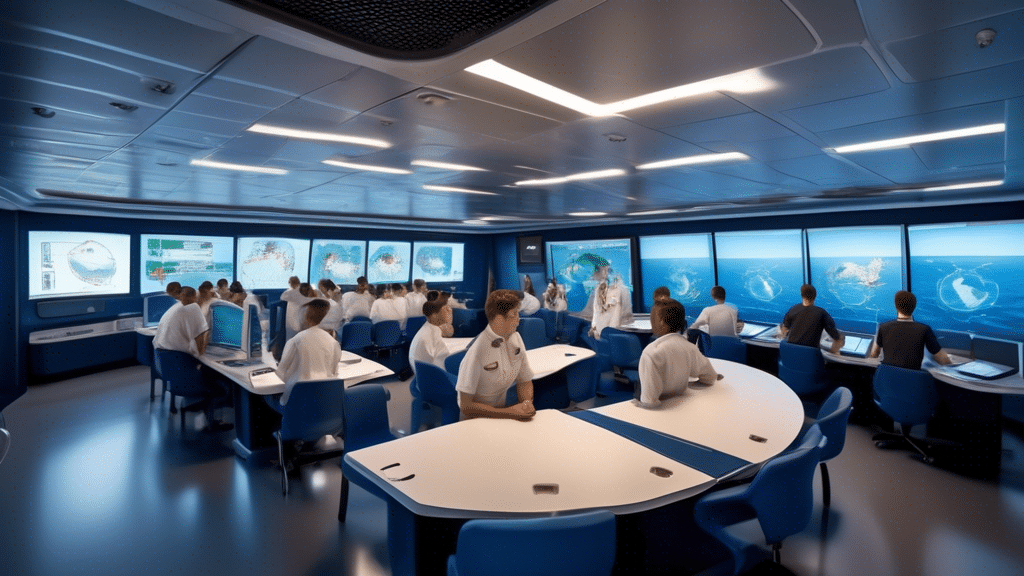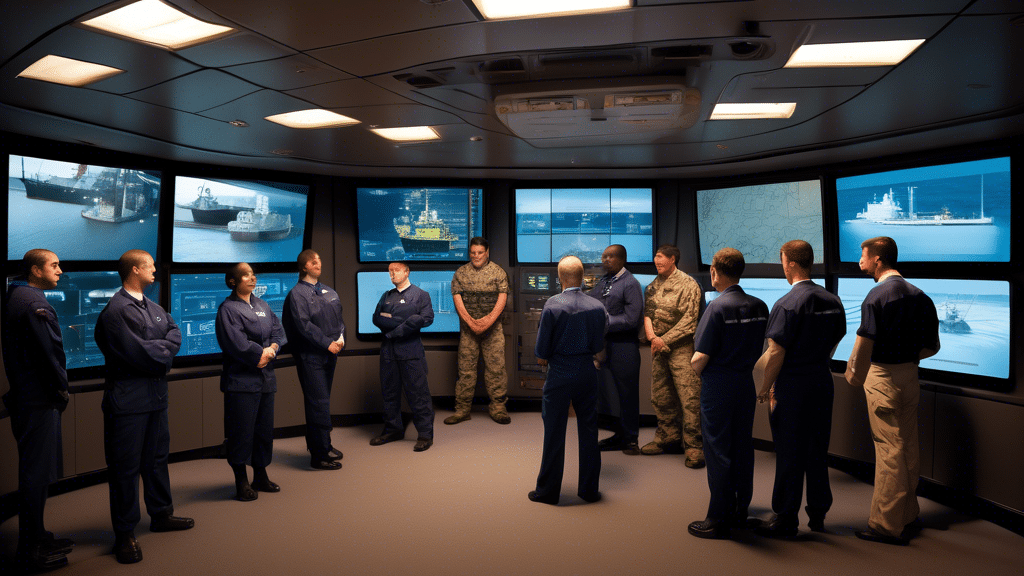In the interconnected world of maritime commerce, the role of a Port Facility Security Officer (PFSO) stands as a cornerstone of port security and operational integrity. Charged with the crucial task of safeguarding ports against a myriad of threats, PFSOs ensure that port facilities operate smoothly and securely, thereby protecting vital supply chains and boosting global trade efficiency. The importance of security in maritime operations cannot be overstated; from mitigating potential terrorist threats to managing everyday security protocols, the responsibilities of a PFSO span a wide spectrum of vital activities. Aspiring to become a PFSO requires a thorough understanding of these responsibilities, coupled with rigorous training and certification. Prospective candidates must navigate a detailed certification process, completing specific qualifications and participating in specialized training programs designed to equip them with the knowledge and skills needed to excel in this critical role.
Understanding the Role of a Port Facility Security Officer
Overview of Port Facility Security Officer Responsibilities
A Port Facility Security Officer (PFSO) is the cornerstone of maritime security operations. Tasked with an array of responsibilities, a PFSO ensures the seamless protection of port facilities, creating a fortress against potential threats. From assessing risks to implementing security protocols, the role demands a vigilant and proactive approach.
Daily duties include conducting comprehensive security assessments, developing and maintaining security plans, and ensuring compliance with the International Ship and Port Facility Security (ISPS) Code. Regular communication with port operators, law enforcement, and other stakeholders is crucial to foster a cohesive security environment. The PFSO also oversees the implementation of security measures, such as surveillance systems and access control procedures, ensuring they are operational and effective.
Importance of Security in Maritime Operations
In an era where global trade is dependent on the efficiency of maritime logistics, the integrity and security of ports cannot be overstated. Ports are bustling hubs of economic activity, making them attractive targets for various threats, including terrorism, smuggling, and cyber-attacks. A breach in security can lead to catastrophic consequences, disrupting trade, causing environmental damage, and endangering lives.
Therefore, the role of a PFSO is not just about law enforcement; it’s about safeguarding the very arteries of global commerce. By maintaining robust security frameworks, a PFSO ensures the uninterrupted flow of goods, which is vital for global trade and economic stability. Advanced training and certification empower these professionals to stay abreast of emerging threats, continuously adapting and evolving the security measures in place.
Discover More About Our Courses Here!
Steps to Certification and Training for a Port Facility Security Officer
Required Qualifications and Prerequisites
To embark on a successful career as a Port Facility Security Officer (PFSO), certain qualifications and prerequisites are essential. These requirements ensure that candidates are adequately prepared for the pivotal role they will play in securing port facilities. Prospective PFSOs should typically possess at least a high school diploma or equivalent; however, higher levels of education, such as a bachelor’s degree in maritime studies, security management, or a related field, can significantly enhance one’s prospects.
Moreover, familiarity with the International Ship and Port Facility Security (ISPS) Code is indispensable. This globally recognized framework provides critical guidelines and protocols for maintaining security in the maritime domain. Prospective PFSOs are often required to have prior experience in maritime operations or security-related fields, which equips them with practical insights into port facility dynamics and the inherent security challenges. Additionally, strong analytical and problem-solving skills, excellent communication capabilities, and a clear understanding of risk assessment and management principles are paramount.
Detailed Certification Process and Training Programs Available
The certification process for becoming a PFSO involves a comprehensive suite of training programs designed to equip candidates with the necessary skills and knowledge. These programs typically adhere to the standards set forth by the ISPS Code. A typical certification process includes modules on security administration, risk assessment, security equipment and systems, and emergency preparedness and response.
1. **ISPS Code Training:** This foundational training focuses on the principles and requirements of the ISPS Code. It covers the regulatory framework, security levels, and the responsibilities of a PFSO in ensuring compliance with international maritime security standards.
2. **Risk Assessment:** PFSOs must be adept at identifying and evaluating potential security threats. This training module teaches candidates how to conduct thorough risk assessments and implement appropriate security measures to mitigate identified threats. Emphasis is placed on understanding the vulnerabilities of port facilities and devising strategies to bolster security.
3. **Security Planning:** Effective security planning is crucial to the role of a PFSO. Training includes the development and implementation of security plans tailored to specific port facilities. Candidates learn to create, review, and update security plans, ensuring they address evolving threats and regulatory changes.
4. **Security Equipment and Systems:** Modern port facilities employ various security technologies and systems. This training module familiarizes candidates with the latest security equipment, including surveillance systems, access control mechanisms, and detection devices. Practical sessions offer hands-on experience in operating and maintaining these systems.
5. **Crisis Management and Emergency Response:** A critical aspect of a PFSO’s responsibilities is managing security incidents and emergencies. This training module covers crisis management, incident response protocols, and coordination with external agencies such as law enforcement and emergency services. Role-playing scenarios and simulated exercises enhance candidates’ readiness to handle real-life emergencies.
6. **Maritime Security Awareness:** Beyond technical skills, PFSOs must foster a security-conscious culture among port facility personnel. This training emphasizes the importance of security awareness, encouraging proactive behavior in identifying and reporting suspicious activities. Candidates learn techniques to conduct security briefings and training sessions for staff.
Accredited Training Providers
Selecting a certified training provider is critical for ensuring that the education and certification received are recognized globally. Reputable institutions often include maritime academies, specialized security training organizations, and institutions affiliated with recognized maritime and security authorities. These providers offer comprehensive certification courses that meet or exceed the standards mandated by international and national regulatory bodies.
Steps to Certification
The path to certification is structured to build competence progressively. Here is a step-by-step breakdown:
1. **Enrollment:** Begin by enrolling in an accredited training program that offers comprehensive PFSO training courses.
2. **Completion of Training Modules:** Successfully complete the required training modules, which typically involve classroom instruction, practical exercises, and assessments.
3. **Practical Experience:** Gain practical experience through internships or placements at port facilities. Real-world exposure is invaluable for understanding the practical aspects of port security operations.
4. **Certification Examination:** Upon completing the training and practical requirements, candidates must pass a certification examination. This exam assesses knowledge of the ISPS Code, risk management, security planning, and emergency response.
5. **Continuous Professional Development:** Certification does not mark the end of a PFSO’s training journey. Continuous professional development is encouraged to stay abreast of evolving security challenges and technological advancements. Regularly attending refresher courses and industry seminars is essential for maintaining certification validity and enhancing professional prowess.
Through meticulous training, diligent adherence to regulatory standards, and a commitment to continuous learning, aspiring Port Facility Security Officers can achieve the highest levels of competence and readiness to protect maritime infrastructure.
The role of a Port Facility Security Officer (PFSO) is pivotal in safeguarding the integrity of maritime operations. Responsible for ensuring the protection of ports and vessels from the myriad of threats that can disrupt maritime safety and security, the PFSO must be equipped with specialized knowledge and skills. This is where their rigorous training and certification come into play.
Embarking on the journey to becoming a PFSO begins with meeting the necessary qualifications and prerequisites, which may include a background in maritime security and relevant educational credentials. The certification process is comprehensive, aiming to furnish candidates with an in-depth understanding of the International Ship and Port Facility Security (ISPS) Code, risk assessment procedures, and emergency response protocols.
Moreover, a plethora of training programs are designed to provide hands-on experience and practical insights, ensuring that aspiring PFSOs are well-prepared to face real-world challenges. Whether through workshops, simulations, or advanced coursework, these programs are structured to cultivate proficiency and confidence in handling port security operations.
In summary, the path to earning a PFSO certification is not merely about fulfilling formal requirements but about dedicating oneself to the protection and smooth functioning of global maritime activities.














